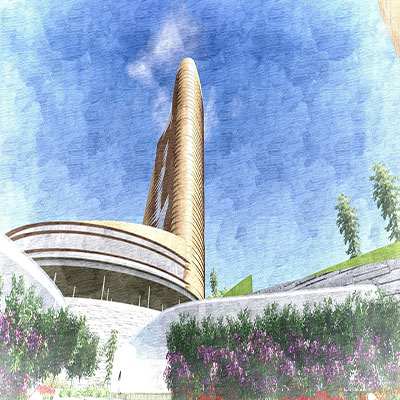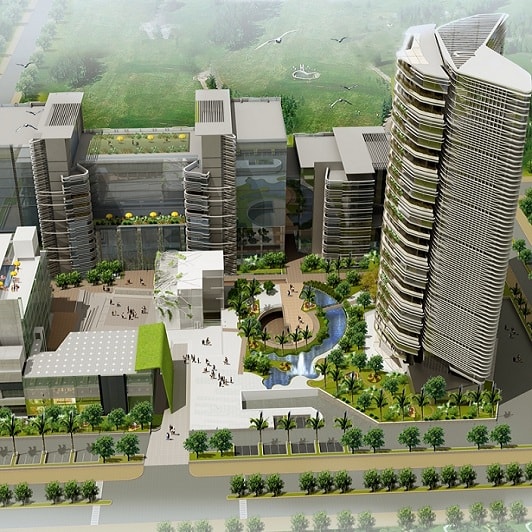
MIRAMBIKA SCHOOL, NEW DELHI
The building was conceived as a place to hold an innovative program of education, research, training, and scholarship. Mirambika is a 'free progress' school where the stress is on child-centric value-oriented education. There is a very light curriculum that is customized to each child, no strong subject divides, no mainstream examination or testing – instead, there is continuous and ongoing feedback and evaluation. The spaces were designed to be organic, amorphous, and such that the boundary between inside space and outside space would vanish. This reflected the spirit of the organization – breaking of all barriers, actualizing the self and achieving excellence through consulting the inner consciousness.
The building is planned as a space filling modular grid on a basic structural dimension of 7.2 m, with concrete ribs subdividing the slab into eight or four equal panels. Though they are very few, walls can be shifted to any of these locations on the ribs, and the floor which is made under them will need to be ground, while the electrical services in the ceiling are redundantly arranged so that they can just drop down according to flexible arrangements of the spaces below. Water based services (sinks, toilets, water play areas) are placed in defined, relatively inflexible, locations. Even the planning was done in parts by a participatory process so that after the basic modular structure the infill walls and windows were indeterminate.
The building is furnished with white terrazzo and china mosaic roofs, extensive courtyards and vegetation for cooling and ventilation, and integrated solar hot water.
The design team was apprehensive that the type of building detailed – almost like a verandah, with few walls, therefore open to dust – might prove a liability due to heat and dust, but as it turns out, the dust-free environment of the Ashram around has allowed this building to actually be comfortable in all seasons.
This project is considered a pioneering interpretation of learning space representing an evolution towards openness and acceptance of the natural environment, and is mentioned in the twentieth edition of one of the main reference works in architectural history, A history of Architecture by Sir Bannister Flecther.













More Projects

HEADQUARTERS BUILDING FOR IT DEPARTMENT OF GOVT. OF GABON
Campus | Institutional | Office
VIEW PROJECT

BAMBOO RESEARCH AND TRAINING INSTITUTE, CHANDRAPUR
Campus | Institutional | Planning | Residential
VIEW PROJECT